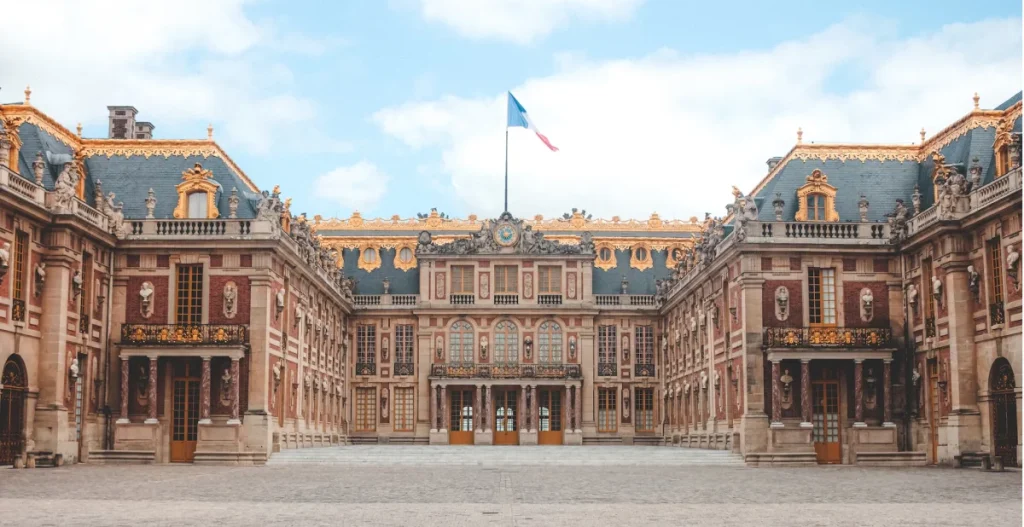
Versailles Palace, a UNESCO World Heritage Site, is one of the most iconic and historic landmarks in France. Known for its opulent architecture, stunning gardens, and rich history, a visit to the Palace of Versailles is an essential experience for travelers in France. In this guide, we’ll take you through everything you need to know to make the most of your visit to this remarkable palace.
History of Versailles Palace
Before delving into the practical details, let’s begin with some historical context. Versailles Palace was originally a hunting lodge built by Louis XIII in 1623. However, it was his son, Louis XIV, who transformed it into an extravagant palace and the center of the French monarchy. It remained the royal residence until the French Revolution in 1789. The palace and its gardens reflect the opulence and absolute power of the French monarchy during the Ancien Régime.
The Palace of Versailles, known as Château de Versailles, has a fascinating and intricate history that spans several centuries. This magnificent palace is renowned for its lavish architecture, breathtaking gardens, and its pivotal role in French history, particularly during the reign of King Louis XIV. Here’s a concise overview of the historical journey of Versailles Palace:
The history of Versailles commences in the early 17th century when it was a humble hunting lodge. King Louis XIII, a predecessor of Louis XIV, acquired the estate as a serene retreat from the bustling French court in Paris.
The Ambition of Louis XIV: The transformation of the hunting lodge into a grandiose palace is credited to King Louis XIV, often referred to as the “Sun King.” He enlisted the services of the renowned architect Louis Le Vau to expand and reimagine the building. The primary objective was to establish a royal residence in the town of Versailles, outside of Paris.
Construction and Expansion: Work commenced in 1661 and extended over several decades. The celebrated landscape architect André Le Nôtre was responsible for designing the splendid gardens. The Hall of Mirrors (Galerie des Glaces), perhaps the most iconic part of the palace, was completed in 1684. The palace grew to encompass hundreds of rooms, galleries, and exquisite features.
Symbol of Absolute Monarchy: Versailles became an emblem of Louis XIV’s absolute monarchy, serving not just as a royal residence but also as the epicenter of French political power. The king conducted official government affairs from Versailles, effectively establishing it as the governmental hub of France.
Treaty of Versailles: Versailles holds a prominent place in international history. The Hall of Mirrors witnessed the signing of the Treaty of Versailles in 1919, formally concluding World War I.
Louis XVI and the French Revolution: The palace’s association with the French monarchy faced a tumultuous end during the French Revolution. In 1789, the revolutionary upheaval compelled King Louis XVI and his queen, Marie Antoinette, to vacate Versailles.
Museum and Cultural Treasure: Following the Revolution, Versailles evolved into a museum and a cultural treasure. Presently, it enjoys UNESCO World Heritage Site status and stands as one of the most visited attractions in France, captivating millions of tourists annually.
Palace and Grounds: Versailles encompasses not only the main palace but also extensive gardens, the Grand Trianon, the Petit Trianon, the Hameau de la Reine (Queen’s Hamlet), and the Grand Canal.
Restoration and Preservation: The palace has undergone multiple restoration initiatives aimed at preserving its architectural and historical importance. It remains a symbol of France’s royal legacy and its rich cultural heritage.
The Palace of Versailles serves as a testament to the splendor of the French monarchy and its profound impact on the nation’s history and culture. Its architectural brilliance, magnificent gardens, and historical significance make it an absolute must-visit destination for tourists and aficionados of history.
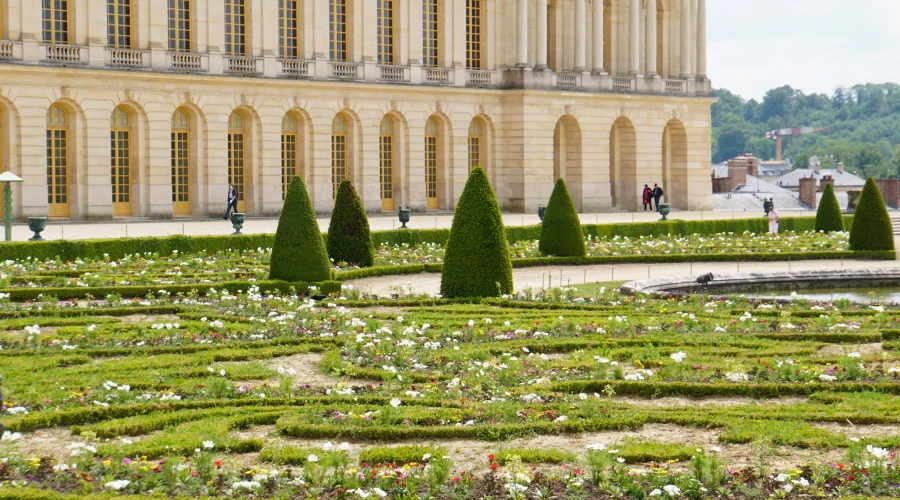
Location and How to Get There
The Palace of Versailles is located in the city of Versailles, approximately 20 kilometers southwest of Paris.
You can get there:
-
- By Train: The RER C train from Paris (line C5) will take you to Versailles Rive Gauche station. The palace is a 10-15 minute walk from the station.
-
- By Car: If you’re driving, take the A13 motorway from Paris to Versailles. Parking is available nearby.
Opening Hours and Tickets
The Palace of Versailles is open to visitors Tuesday through Sunday. General hours are from 9:00 a.m. to 5:30 p.m. during most of the year, although it is advisable to check specific hours on the official website before planning your trip, as they may vary depending on the season and special events.
It is important to note that the last admission to the Palace is usually 30 minutes before closing time. Therefore, if you wish to explore the interior of the palace and surrounding grounds, be sure to arrive early enough to have an unhurried experience.
In the digital age, buying your tickets for the Palace of Versailles online is the most convenient way to secure access and avoid long lines at the box office.
When you buy your tickets online, you will have the option to select the date and time of your visit. Choosing a specific time allows you to avoid crowds and ensures faster access to the palace. If possible, schedule your visit early in the morning to enjoy a quieter atmosphere.
In addition to the palace, the gardens of Versailles are a marvel in their own right. Be sure to purchase tickets that allow you to explore both the palace and the gardens to make the most of your visit.
If you prefer a quieter experience, consider visiting the Palace of Versailles on weekdays or during the off-season when crowds are less dense. This will allow you to explore the palace and gardens in a more relaxed manner.
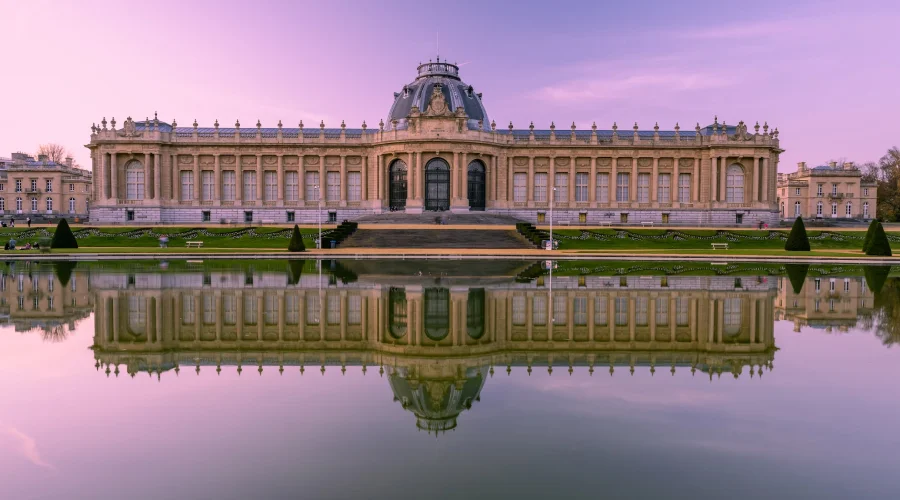
What to See at Versailles Palace
-
- The Palace: Explore the opulent interiors, including the Hall of Mirrors, King’s Apartments, Queen’s Apartments, and more. Audio guides are available for a self-guided tour.
-
- The Gardens: The vast gardens of Versailles are renowned for their geometric designs, fountains, sculptures, and exquisite landscaping. It’s a perfect place for a leisurely stroll.
-
- The Trianon Palaces: The Grand Trianon and the Petit Trianon are separate palaces located within the estate, each with its own unique history and architectural style.
-
- The Estate of Marie-Antoinette: Nestled within the larger Versailles estate, this area includes the charming Hameau de la Reine (Queen’s Hamlet) and the Petit Trianon, where Marie-Antoinette had her private retreat.
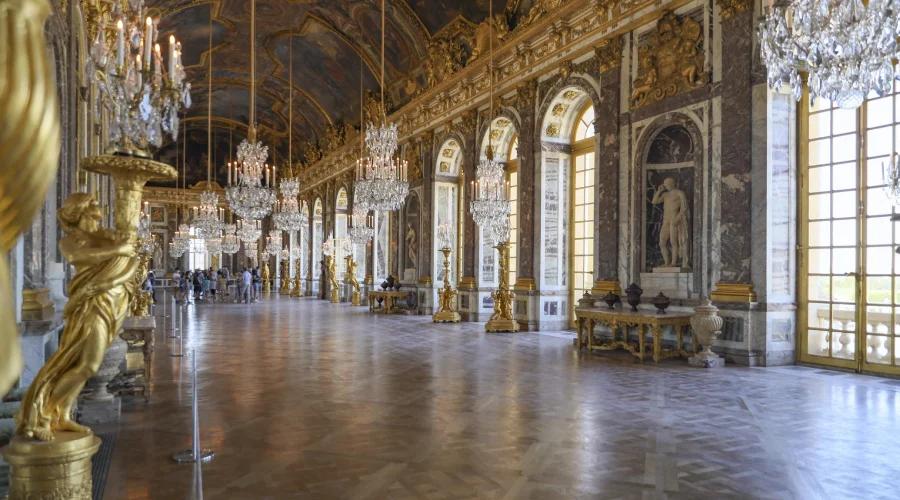
Tips for Your Visit
-
- Arrive early to avoid crowds and long lines, and arrive at the palace early in the morning.
-
- Wear Comfortable Shoes since you’ll be doing a lot of walking, so comfortable shoes are a must.
-
- We recommend you bring snacks, there are limited dining options inside the palace, so consider bringing some snacks and water.
-
- Respect the rules, photography is generally allowed but without flash. Be respectful of the palace’s rules and artifacts.
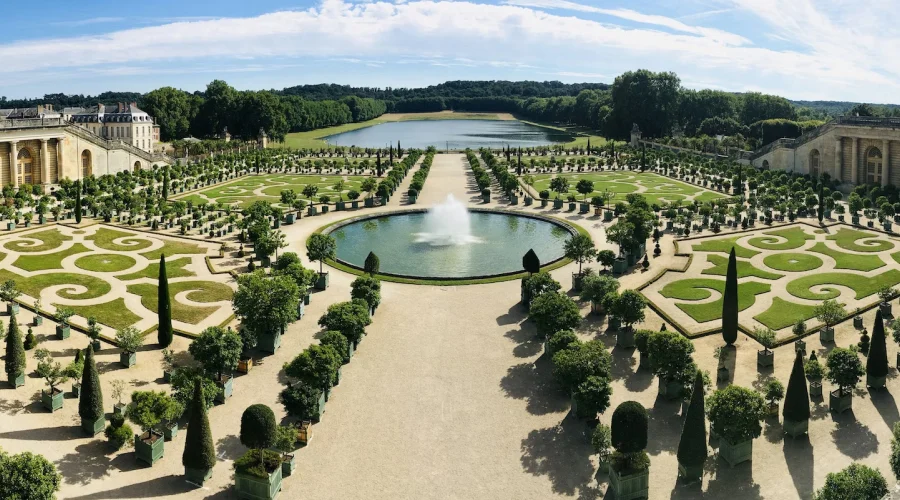
Special Events
While special events at the Palace of Versailles can vary by season and year, a number of themed events and special shows that highlight the rich history and culture of the venue are often organized. Here are some examples of events that could take place at the Palace of Versailles:
Concerts and classical music performances: the Royal Opera of Versailles and other venues in the palace often host internationally renowned classical music concerts. These events may include performances by symphony orchestras, leading musicians and prestigious choirs.
Themed festivals and exhibitions: At certain times of the year, special festivals and exhibitions highlighting specific aspects of French history and culture are organized. These events may include garden festivals, themed art exhibitions or cultural events dedicated to significant historical moments.
Light and sound shows: On special occasions, the Palace of Versailles is transformed into a stunning backdrop for light and sound shows that highlight the architecture and gardens in a unique and exciting way. These shows often combine dazzling visual effects with live music and historical narration.
Holiday celebrations: During special holidays, such as Christmas and New Year’s, the Palace of Versailles may organize themed events and decorations to celebrate the season. These events often include special exhibitions, festive markets and interactive activities for the whole family.
Nearby Attractions
The Palace of Versailles, with its historic opulence and breathtaking gardens, is a remarkable jewel on the outskirts of Paris, France.
In addition to its magnificence, the area surrounding Versailles is home to a number of attractions and cultural sites worth exploring.
Here are some of the most outstanding attractions you can visit near the Palace of Versailles:
-
- Grand Trianon: the Grand Trianon was built by King Louis XIV of France in the 17th century as a place of retreat and escape from the hustle and bustle of the court at the Palace of Versailles. This elegant palace of pink marble and Corinthian columns became a retreat for royalty and their closest guests. With its distinctive architecture and exquisite surrounding gardens, the Grand Trianon has witnessed numerous historic events and remains a remarkable example of 17th century architecture in France.
- Petit Trianon: the Petit Trianon, on the other hand, was built in the 18th century and was used as a pleasure residence by Queen Marie Antoinette. This charming neoclassical structure, surrounded by lush gardens and picturesque landscapes, reflects the queen’s personal taste and style. With its delicate design and intimate atmosphere, the Petit Trianon served as a private place where the queen could escape the constraints of court life and enjoy a more relaxed and natural environment.
- The Queen’s Hamlet: is a quaint and charming country village located on the grounds of the Palace of Versailles, on the outskirts of Paris, France. This picturesque and bucolic enclave was commissioned by Queen Marie Antoinette in the 18th century as a place of retreat and escape from the rigidity of the royal court. It was designed by architect Richard Mique and built between 1783 and 1786 and consists of a series of cottages, a mill, a tower, a bridge and a farmhouse, all designed to evoke the feeling of an authentic country village.
- Royal Opera of Versailles: This splendid theater is an integral part of the palace grounds and has been a stage of historical and cultural importance throughout the centuries. It was built in the 18th century during the reign of Louis XV and was designed by the architect Ange-Jacques Gabriel. It is a magnificent example of neoclassical architecture and is noted for its elegant design and impressive decoration. During the time of the French monarchy, this theater was an important stage for royal performances and an essential part of life at the court of Versailles.
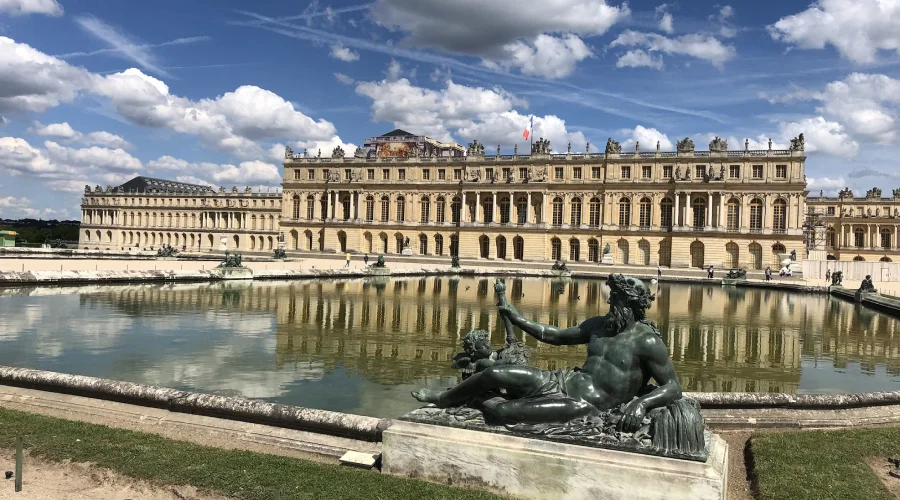
Conclusion
In conclusion, a visit to the Palace of Versailles is an extraordinary journey into the heart of French history, opulence, and architectural grandeur. This UNESCO World Heritage Site, located just a short distance from Paris, offers a captivating experience that allows visitors to immerse themselves in the world of the French monarchy.
The history of Versailles, its iconic palace, stunning gardens, and adjoining palaces such as the Trianon and the Queen’s Hamlet, all contribute to a remarkable exploration of the grandeur and luxury of the Ancien Régime. Versailles is not merely a place to see; it’s a place to experience history, art, and culture.
When visiting Versailles, consider arriving early to avoid crowds, wear comfortable shoes for exploring the vast estate, and take your time to appreciate the intricate details of the palace and the beauty of its gardens. The site offers much more than the famous Hall of Mirrors – it unveils a world of artistic expression, architectural brilliance, and historical significance.
Whether you’re a history enthusiast, an admirer of art and architecture, or simply looking to be enchanted by magnificent gardens, Versailles Palace promises a memorable and enriching experience. It’s a testament to the enduring legacy of French culture and an opportunity to relive the splendor of the past. Don’t miss the chance to explore this magnificent treasure, as it will undoubtedly leave you with a deeper appreciation of France’s cultural heritage.
